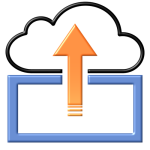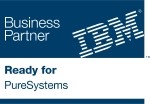OpenLayer – Frequently Asked Questions
OpenLayer is a non-destructive solution whereby you can continue using your existing client (or terminal emulator) to connect and use your legacy system while providing you a standard web browser based user interface (UI) to those applications.
Yes, OpenLayer's responsive UI caters to various form factors. So, if you have a standard web browser available on your device, you can connect to your legacy application and access your applications.
Yes, OpenLayer can make your legacy Mainframe application available via the cloud. OpenLayer provides you a standard web browser based user interface (UI) straight out of the box.
Nothing. If you run the screen again using OpenLayer, your changes will be immediately reflected in your UI.
Not necessarily. The OpenLayer architecture allows you to implement your own UI interface as long as you honor the API's provided by OpenLayer. This could be another HTML/Javascript interface or it could be a GUI client or even a mobile app.
Absolutely. Any screen that is available in your legacy system and accessible by OpenLayer can be scripted using OpenTalk. With easy to write and maintain scripts, OpenTalk enables you to perform any operation on a screen that a user can perform on your legacy system.
Currently, OpenLayer is available for the IBM Mainframe (3270), the AS/400 aka iSeries aka IBMi (5250) and any other system that uses PRO-IV (including SuperLayer and the Glovia ERP). However, because of OpenLayer's "wedge"-based architecture, other wedges can be developed to support various other systems.
OpenLayer does it in two ways:
- Legacy systems typically either require a dedicated terminal or a proprietary client to access the legacy applications. OpenLayer provides a web browser based UI which can be accessed from anywhere on any device supporting a standard web browser.
- With OpenTalk, any screen transaction can be written as a script. Such scripts can be wrapped into, say, RESTful API's thereby allowing easy and risk-free integration with other systems and technologies.
OpenLayer is application agnostic. It does not matter if your application is in, say, the Healthcare domain or the Telecom domain or the Banking domain or the Insurance domain.
If by migration you mean moving your existing application to a different technology stack altogether, OpenLayer will not do it. The key concept behind OpenLayer is to provide you with a way to leverage your time-tested and business-specific applications and provide them with unfettered access via cloud-enablement and turn such transactions into API calls so that they can be integrated with other applications, both modern and otherwise.
OpenLayer is ZERO footprint on the server. It utilizes existing time tested proven business process. No change is required on the server.


